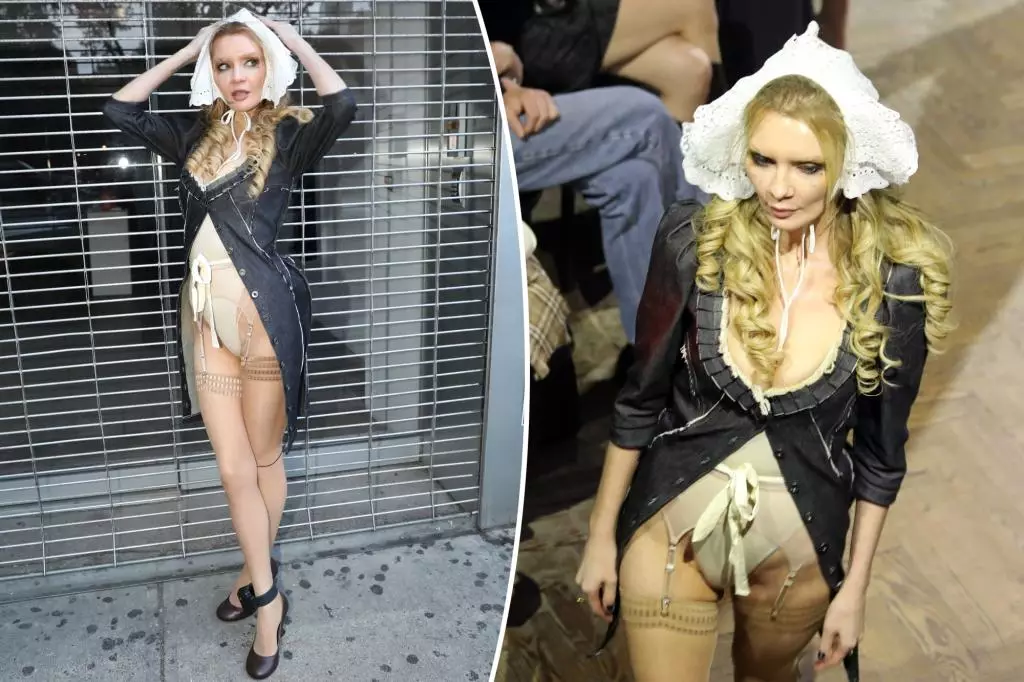In a landscape saturated with fleeting trends and superficial appearances, the presence of a figure like Anna Sorokin—better known as “Delvey”—demonstrates how identity can serve as a provocative tool to challenge conventional norms. Her recent runway debut at Elena Velez’s Spring/Summer 2026 show exemplifies a strategic use of shock value and narrative storytelling. By walking the runway in a revealing ensemble paired with her court-ordered ankle monitor, Delvey transforms her legal troubles into a performance piece, blurring the lines between personal hardship and high fashion. Her choice underscores a broader trend: modern influencers are less about polished perfection and more about embracing raw, imperfect realities to spark conversations and redefine power structures within the industry.
Fashion as a Statement of Rebellion and Reinvention
Delvey’s runway appearance is not merely an act of visual audacity but a calculated act of rebellion against societal expectations. Adorning herself in lingerie, a denim coat, and an ankle monitor, she challenges viewers to confront the stigmas attached to incarceration and social ascent. Her accessories—a delicate lace bonnet juxtaposed starkly with her electronic anklet—serve as symbols of her complex identity: simultaneously imprisoned and fiercely unrestrained. The juxtaposition forces the audience to question notions of status, authenticity, and the boundaries of personal expression. It’s a deliberate refusal to conform to the sanitized images often championed by the fashion industry, positioning her as both a muse and a critic of its superficiality.
The Persona as a Tool for Transformation
Beyond the runway, Delvey’s dedication to her appearance and her evolving self-image reflect a deeper desire for personal agency. Her extensive beauty routine—featuring laser treatments, chemical peels, and innovative therapies—illustrates her commitment to reinventing herself physically while maintaining control over her narrative. This obsession with self-image echoes a broader societal obsession with youth and perfection but is infused with an element of defiance: her refusal to undergo invasive surgeries and her choice of treatments highlight her quest for authenticity on her terms. Her candid admission about quitting Ozempic and embracing alternative methods like vibration plates signals a rejection of societal pressures to conform and an assertion of autonomy over her body.
From Outcast to Cultural Catalyst
Anna Sorokin’s trajectory from a figure of scandal to a cultural icon underscores the transformative power of reinvention. Her ventures—ranging from merchandise to speculative media projects—are extensions of her persona, designed to influence and unsettle traditional narratives. Her involvement with “Bunnygate” merch and collaboration with PR veterans like Kelly Cutrone serve as a testament to her ability to leverage controversy into creativity. Walking in lingerie with an ankle monitor at NYFW is more than a stunt; it’s an act of reclamation—an affirming statement that she’s in control of her story, rewriting her narrative from societal pariah to iconoclast.
In a world where authenticity is often commodified, Delvey’s approach dares to be provocative—using her past to challenge perceptions and push the boundaries of what fashion can represent. Her evolution exemplifies the fact that true influence lies in daring to be unapologetically oneself, regardless of societal judgment.

